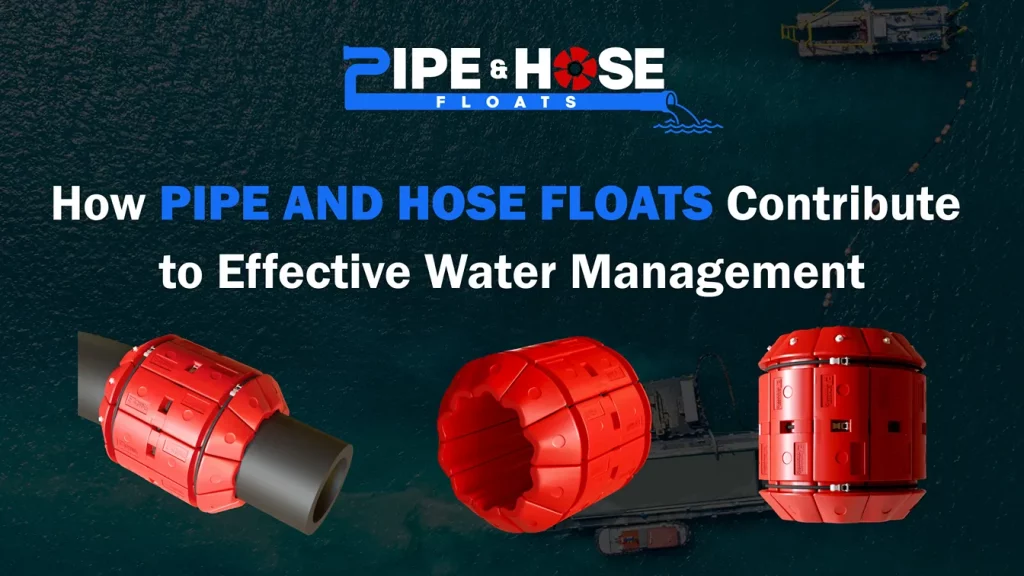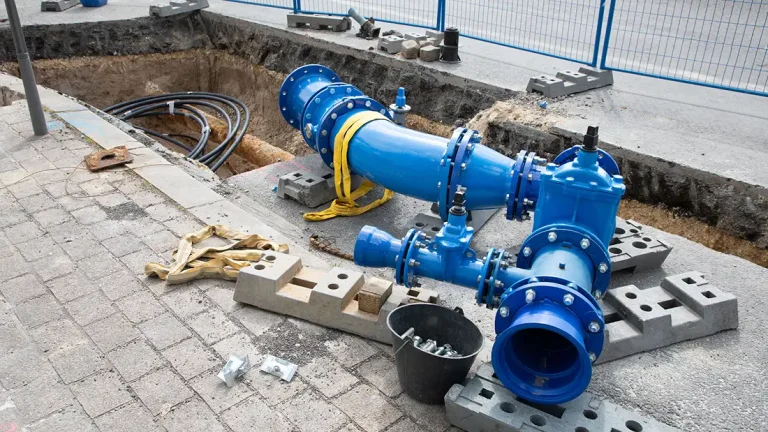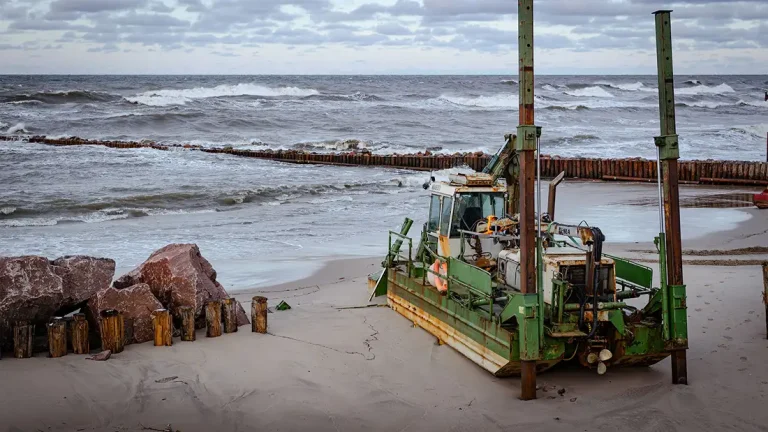Effective water management is essential in specific industries that face unique challenges. In mining, managing contaminated water and preventing environmental hazards is crucial. Agriculture requires efficient water distribution systems for irrigation, which is critical for crop survival and yield. In wastewater treatment, sustainable processing and recycling water is a significant concern. Innovative solutions like pipe, hose, conventional, and cable floats are employed to address these challenges. These tools help maintain the stability and efficiency of water transport systems, ensuring that water management practices meet industrial demands and adhere to environmental standards. In this blog, we will delve deep into how pipe and hose floats contribute primarily towards effective water management.
The Role of Pipe and Hose Floats in Water Management
Maritime and Shipping:
Pipe and hose floats in the maritime and shipping industry provide buoyancy and support to underwater pipelines, hoses, and cables, ensuring their stability and preventing damage from waves and currents. Thus, they facilitate efficient and safe water transportation.
Mining and Construction:
In these sectors, pipe floats support the transport of slurries and other materials across water bodies. They prevent pipelines from sinking under the weight of rough materials, thus maintaining a consistent flow and reducing the risk of pipeline damage.
Wastewater Management:
Hose floats are indispensable in wastewater treatment plants. They keep aeration hoses and biological reactors at the correct operating depths, ensuring efficient treatment processes and helping maintain proper environmental controls.
Oil and Gas:
Pipe floats stabilize underwater pipelines and cables, essential for safely transporting oil and gas. They help prevent pipelines from resting on the seabed, reducing the risk of breaks and leaks that could lead to environmental disasters.
Dredging:
Dredging operations utilize floats to manage discharge hoses that remove sediments from waterways. Floats keep these hoses on the surface, facilitating the easy movement of sediment-laden water to disposal or treatment areas.
Renewable Energy:
In the renewable energy industry, pipe and hose floats support underwater pipelines that transport water in hydroelectric, tidal, and offshore wind energy projects. They maintain pipeline stability, prevent damage, and ensure consistent water flow for power generation.
Benefits of Using Pipe and Hose Floats
Improved Flow Control:
Pipe and hose floats help maintain a consistent position and depth for hoses and pipes, ensuring an uninterrupted and controlled water flow or other liquids. This is crucial in applications such as irrigation in agriculture and slurry transfer in mining operations, where consistent flow rates are essential for operational efficiency.
Reduced Risk of Leakage:
By stabilizing pipes and hoses, floats prevent excessive movement and bending, which can lead to wear and eventual leakage. This is particularly important in environmental management, where preventing leaks is crucial to avoiding water loss and contamination.
Enhanced Safety:
Floats prevent hoses and pipes from sinking or tangling, creating hazardous conditions for workers involved in installation, maintenance, or daily operations. Using floats significantly minimizes these risks, promoting a safer working environment.
Extended Equipment Lifespan:
By reducing physical stress on pipes and hoses, floats help prolong their operational lifespan. This reduces the need for frequent replacements and cuts maintenance costs, making water management systems more cost-effective in the long run.
Versatility and Adaptability:
Various types of floats, including conventional and cable floats, allow for flexibility in managing different systems and conditions. Whether floating cables for monitoring equipment in wastewater treatment or stabilizing hoses in marine environments, floats provide the necessary support to adapt to diverse applications.
Environmental Protection:
Conventional floats and other floating devices play a crucial role in protecting ecosystems by ensuring that the infrastructure for water management does not disrupt natural water bodies or contribute to pollution.
Case Studies:
1. Maritime and Shipping:
In a busy port in Southeast Asia, the introduction of cable floats significantly improved the efficiency of undersea cable operations. Previously plagued by frequent disruptions due to cable entanglements and damage, deploying these floats reduced operational downtimes by 40%. The floats kept the cables afloat, minimizing contact with navigating vessels and underwater obstructions and enhancing safety and communication reliability.
2. Mining and Construction:
A mining company in Australia used pipe floats for their vast network of slurry pipelines. Before the introduction of floats, the company often faced pipeline ruptures and blockages. Using durable pipe floats ensured that pipelines remained buoyant and correctly aligned, reducing maintenance calls by over 30% and enhancing the overall safety of the operation.
3. Oil and Gas:
In the Gulf of Mexico, an oil and gas company utilized conventional floats to stabilize a newly laid pipeline. These floats prevented the pipeline from contacting the seabed, reducing the risk of abrasions and potential leaks. This intervention safeguarded the marine environment and enhanced the pipeline’s longevity and operational safety.
4. Dredging:
During a significant dredging project along the Mississippi River, hose floats allowed for more controlled sediment removal. The floats kept the discharge hoses afloat, facilitating the easy movement and precise placement of sediments. This method significantly improved the project’s efficiency and reduced the environmental impact of dredging activities.
Best Practices While Selecting Pipe and Hose Floats:
- Material Compatibility: Choose floats made from materials resistant to the chemicals and environmental conditions of the application. For instance, floats should withstand hydrocarbons and saltwater in the oil and gas industries.
- Buoyancy Requirements: Ensure the floats provide adequate buoyancy for the pipeline or cable’s weight. This is crucial in dredging and mining, where heavy hoses are used.
- Durability and Quality: Opt for high-quality, durable floats that withstand harsh environments and frequent use. This is particularly important in maritime and renewable energy applications where floats are exposed to corrosive saltwater and extreme weather conditions.
- Size and Fit: Select the correct size and fit to effectively secure the pipes, hoses, or cables. Inadequate sizing can lead to slips or exposure, especially in dynamic environments like maritime shipping.
- Environmental Impact: Consider environmentally friendly options that minimize ecological footprints. This is crucial for all industries, particularly wastewater management and renewable energy, to support sustainability goals.
Maintaining the Floats for Better Lifetime and Efficiency:
Regular maintenance is crucial to ensure the maximum lifetime and optimal performance of pipe, hose, conventional, and cable floats. Here are some essential practices:
- Regular Inspections: Check floats regularly for signs of wear and tear, such as cracks, abrasions, and UV degradation. This is especially important for floats in harsh environments like maritime and oil and gas industries.
- Cleaning: Keep floats clean from algae, barnacles, and other marine growths, which can affect buoyancy and durability. Use mild detergents and avoid harsh chemicals that can degrade the float materials.
- Proper Storage: When not in use, store floats in a cool, dry place away from direct sunlight to prevent UV damage and prolong their life.
- Repair and Replacement: Promptly repair minor damage or replace floats when repair is not feasible. This prevents minor issues from developing into significant failures that could compromise the system’s efficiency and safety.
Conclusion:
The role of floats in diverse water management applications cannot be overstated. Floats ensure operational efficiency, environmental compliance, and safety across mining, agriculture, and wastewater treatment industries, from maritime operations to renewable energy initiatives. Leveraging high-quality floats such as pipe, cable, hose, and conventional floats is imperative for optimizing water transport systems and safeguarding critical infrastructure; for those seeking reliable and durable floats, the Pipe and Hose Floats site stands out as the premier marketplace. Its comprehensive range of products and commitment to quality provide industry professionals with the assurance they need to effectively enhance their water management practices. Trusting in Pipe and Hose Floats ensures operational excellence and contributes to sustainable and responsible resource management for future generations.






